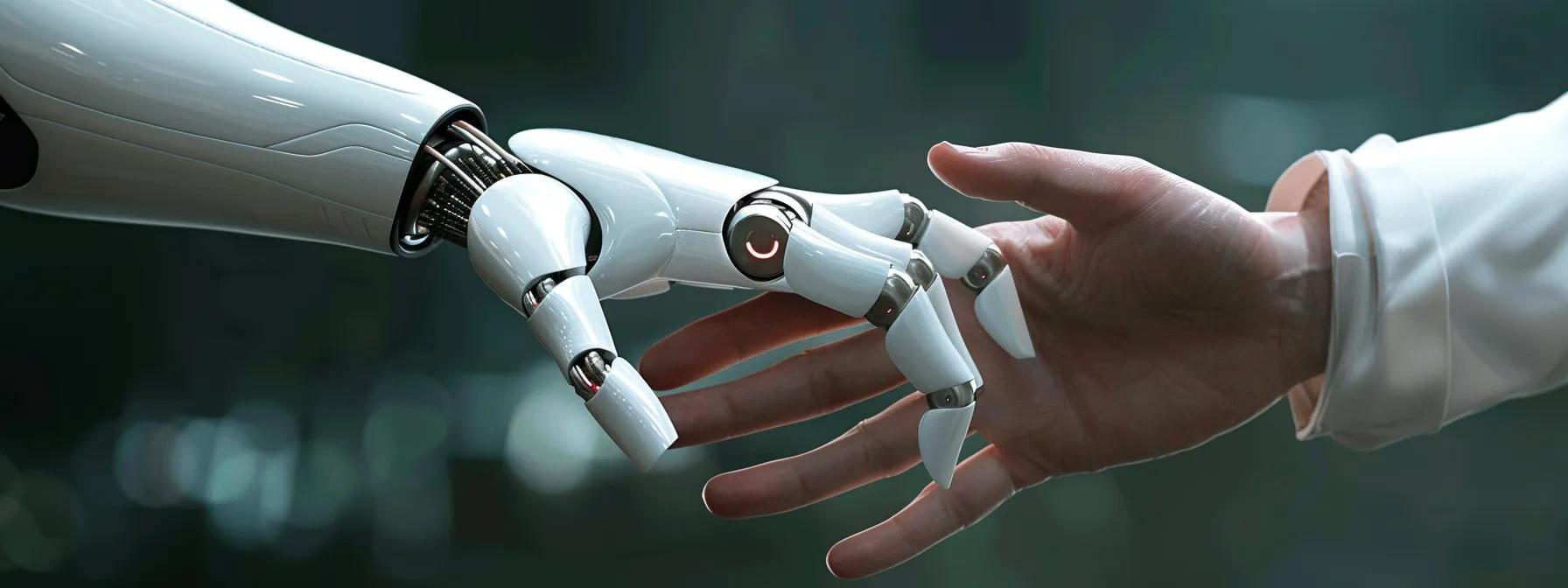
The Future of Graphic Design: AI, Automation and Creativity
Graphic design is evolving faster than ever before, driven by rapid technological advancements and the growing integration of artificial intelligence (AI). What was once a field rooted solely in manual skill and artistic intuition is now being transformed by intelligent software that can analyze, adapt, and even generate designs autonomously. Thanks to AI in graphic design, the traditional boundaries between creativity and technology are fading. This convergence is not only streamlining workflows but also opening up a new era of possibilities for designers—one where machines can assist in ideation, automate repetitive tasks, and provide real-time design suggestions based on user behavior or brand data.
This transformation, however, comes with both opportunities and challenges. On one hand, automation allows for faster turnaround times, scalable content creation, and greater efficiency. On the other, it raises questions about originality, authorship, and the evolving role of the human designer. As tools become more intelligent, the creative process itself is being redefined.
The future of graphic design, therefore, is not just about mastering traditional skills or new software—it’s about adapting to a hybrid environment where human creativity and AI-powered innovation coexist. Designers who embrace this shift, and learn to collaborate with intelligent tools, will not only stay relevant but lead the next wave of creative transformation.
In this blog, we explore the powerful impact of AI, automation, and machine learning on graphic design, and how creatives can adapt and thrive in this new era.
How AI Is Transforming Graphic Design
AI in graphic design is no longer just a passing trend—it’s a transformative force that’s redefining how designers work, think, and create. By automating repetitive tasks and offering intelligent design suggestions, AI is empowering both professional designers and beginners to work faster, smarter, and more creatively than ever before.
From automated layout generation to intelligent image recognition and editing, AI tools are optimizing every stage of the design process. Platforms like Adobe Sensei use machine learning to understand design intent and recommend layout changes, color corrections, or even photo enhancements. Canva’s Magic Design allows users to input basic content and instantly receive ready-to-use design options tailored to their needs, significantly reducing the time spent on layout and styling.
Meanwhile, AI art generators such as Midjourney, DALL·E, and Runway are pushing creative boundaries by turning text prompts into complex, stylized visuals—something that would have required hours of manual effort just a few years ago. These tools don’t just speed up the process; they also unlock entirely new forms of expression that were previously inaccessible without advanced design skills.
What’s most exciting is how AI is enabling real-time collaboration and personalization at scale. Designers can now tailor visuals for different audiences automatically, adapt content across multiple platforms, and even use AI insights to improve.
In short, AI is not replacing designers—it’s supercharging their creativity, providing a powerful set of tools that can enhance vision, streamline execution, and open the door to new possibilities in graphic design.
Key Areas Where AI Is Making an Impact in Graphic Design
As AI in graphic design continues to evolve, it’s revolutionizing key areas of the design process—enhancing productivity, encouraging creativity, and redefining what’s possible. Here are three major areas where AI is making a powerful impact:
1. Smart Design Assistance
Modern AI-powered design tools now go far beyond simple automation—they act as intelligent design assistants. Using machine learning algorithms, these tools can analyze user behavior, content context, and design trends to offer real-time, personalized suggestions.
For example, based on your project type, brand guidelines, or target audience, AI can recommend: designing services.
- Color palettes that align with emotional or branding goals
- Font pairings optimized for readability and style
- Layout adjustments that improve visual hierarchy and user engagement
Tools like Canva Magic Design, Figma’s AI plugins, and Adobe Firefly are leading the charge, giving designers a head start on every project and reducing time spent on decision fatigue. This level of design intelligence enables both beginners and professionals to create visually compelling designs faster and more confidently. Future of BPO in India
2. Automated Repetitive Tasks
One of the most immediate benefits of AI in graphic design is the automation of tedious, repetitive tasks. Time-consuming actions that once required manual effort—such as removing backgrounds from images, cropping visuals for different platforms, or adjusting file formats—can now be completed in just seconds.
Popular AI features include: data management
- One-click background removal (e.g., Adobe Express, Remove.bg)
- Smart resizing for social media and ad platforms
- Batch editing and template-based automation
By automating these routine processes, AI allows designers to focus more on creative strategy, concept development, and storytelling—the aspects of design that require human intuition and emotion.
3. Generative Design
Perhaps the most groundbreaking shift is seen in generative design, where AI systems create original visuals from text prompts or user inputs. Platforms like DALL·E, Midjourney, and Runway ML use deep learning to turn simple descriptions into detailed, stylized images. business process outsourcing
This approach is transforming the creative process in several ways:
- Faster concept development: Designers can generate multiple visual directions instantly
- Creative inspiration: AI can offer unexpected visuals that spark new ideas
- Rapid prototyping: Use AI-generated art as placeholders or starting points in design drafts
Generative AI is becoming a powerful tool for brainstorming, mood board creation, and visual experimentation, enabling designers to push the limits of their imagination while saving significant time.
Together, these innovations mark a turning point in the industry. AI is not replacing creativity—it’s enhancing and accelerating it, helping designers turn ideas into impactful visuals more efficiently than ever before.
The Role of Automation in Modern Design Workflows
In today’s fast-paced creative landscape, automation in graphic design has become more than a convenience—it’s a competitive advantage. While some may worry that automation threatens creative freedom, the truth is quite the opposite: automation doesn’t replace creativity—it enhances it. By handling repetitive, time-consuming tasks, automation frees up designers to focus on what truly matters—strategic thinking, innovation, and visual storytelling.
Here’s how automation is streamlining modern design workflows:
Content Scaling
One of the biggest challenges for digital teams is producing consistent content across multiple platforms. Automation tools make it easy to: blog
- Resize and reformat assets for web, mobile, social media, and print in just a few clicks
- Maintain brand consistency across platforms
- Produce high volumes of personalized content quickly
Tools like Adobe Express, Figma Automator, and RelayThat allow teams to efficiently scale their visual content without compromising quality or creativity.
Smart Template Systems
Templates have evolved far beyond static layouts. Today’s AI-enhanced smart templates are dynamic, customizable, and built for efficiency. Design teams can:
- Create reusable brand-compliant templates for recurring projects like social posts, ads, and presentations
- Allow non-designers to easily customize assets without breaking design guidelines
- Reduce bottlenecks by enabling faster content creation across departments
Platforms like Canva for Teams, Crello, and Lucidpress are leading examples of template-driven automation that improves both speed and consistency.
Workflow Integration
Modern automation tools integrate seamlessly with other platforms through APIs, plugins, and cloud-based systems, allowing for end-to-end automation of the design-to-deployment pipeline. This means:
- Syncing design files directly with content management systems (CMS)
- Automating publishing to social media or ad platforms
- Integrating with project management tools like Asana or Trello for smoother collaboration
These integrations save time, reduce errors, and allow designers to spend less time on manual tasks and more time on strategic creative work.
Why It Matters
Automation is particularly valuable for: call center outsourcing
- Design teams working on high-volume projects
- Marketing agencies with tight deadlines
- Brands producing localized or segmented content at scale
By leveraging automation, creative professionals can ensure consistency, speed, and scalability—all while preserving space for original, human-centered design thinking.
Will AI Replace Graphic Designers?
One of the most frequently asked—and feared—questions in the creative industry is: “Will AI replace graphic designers?”
The short answer is no, but the more accurate answer is: the role of the graphic designer is evolving.
Artificial intelligence is rapidly advancing in its ability to perform technical and routine tasks such as background removal, layout generation, and image enhancement. However, AI lacks core human qualities that are essential to impactful design—emotion, empathy, cultural context, creativity, and storytelling.
AI can generate options, optimize choices, and automate production, but it doesn’t understand brand nuance, human values, or the subtle psychological triggers that make a visual resonate. These elements are critical in advertising, branding, editorial design, and user experience—fields where emotional intelligence and deep strategic thinking are essential.
The Future: Human-AI Collaboration
Rather than replacing designers, AI will serve as a powerful creative partner. Think of it as a co-pilot that:
- Accelerates workflows and reduces time spent on repetitive tasks
- Offers smart suggestions based on data and design trends
- Generates inspiration and starting points during brainstorming sessions
This shift means designers must become creative directors of intelligent tools, guiding the output and refining the results. Those who embrace this collaboration will not only remain relevant—they’ll lead the next generation of innovation in visual communication.
What Designers Should Focus On:
To thrive in this AI-assisted future, graphic designers should develop:
- Critical thinking and problem-solving skills
- Emotional and visual storytelling abilities
- Brand strategy and creative direction expertise
- Familiarity with AI tools and their limitations
In essence, AI in graphic design is a tool—not a replacement. Just like the shift from hand-drawing to digital tools, this new wave will elevate the field, not eliminate it.
Preparing for the Future: Skills Designers Need
As artificial intelligence continues to reshape the design landscape, one thing becomes clear: the designers who will thrive are those who evolve alongside the technology. While AI in graphic design can automate certain tasks, it also opens up new opportunities—provided designers develop the right skills to harness it.
To stay relevant, competitive, and creatively fulfilled, here are the core skill sets modern designers should prioritize:
AI Literacy
Designers of the future won’t just use tools—they’ll understand how they work. Being AI-literate means:
- Knowing the capabilities and limitations of AI design tools (e.g., Midjourney, Adobe Firefly, Canva’s Magic Design)
- Learning how to guide AI prompts for optimal results
- Staying updated on ethical use and copyright considerations around AI-generated content
The more you understand how AI works, the better you can use it to amplify—not automate—your creative voice.
UX and UI Design
Despite automation, human-centered design remains irreplaceable. As digital products become more personalized and immersive, skills in User Experience (UX) and User Interface (UI) design are essential.
Focus on: SEO services
- Creating intuitive, accessible interfaces
- Designing seamless digital journeys for web and mobile
- Empathizing with real-world user behaviors and emotional needs
AI can provide insights, but it’s the designer who translates those insights into meaningful experiences.
Creative Problem Solving
Creativity is still the most powerful tool in a designer’s toolkit. In a world of infinite content, what makes a design stand out is:
- Originality: Crafting visuals that surprise, engage, and inspire
- Empathy: Understanding the human emotion behind every design brief
- Critical thinking: Choosing the why behind the what
AI can offer ideas—but only humans can craft meaning.
Data-Driven Design
Designers who know how to leverage analytics and user data will deliver more effective and targeted work. This includes:
- Analyzing heatmaps, A/B testing, and engagement metrics
- Creating visuals informed by performance data
- Collaborating with marketers and analysts to design smarter content
When paired with AI tools that process large datasets, this skill becomes a powerful competitive edge.
Bonus Skill: Adaptability
The design industry is evolving quickly. New tools, formats, and platforms are emerging constantly. Being flexible, curious, and open to learning new things will keep you not only relevant—but indispensable.
The Bright Future of Graphic Design
As we step deeper into a world enhanced by automation and artificial intelligence, the future of graphic design looks brighter than ever. Far from making design obsolete, AI is democratizing creativity—making powerful design capabilities accessible to everyone, not just those with formal training or years of experience.
Thanks to the rise of no-code platforms, AI-powered design assistants, and smart templates, even non-designers can now create polished visuals for websites, social media, presentations, and more. Tools like Canva, Adobe Express, and VistaCreate are lowering the barriers to entry, enabling businesses and individuals to communicate visually with ease.
However, while access to design tools is increasing, creativity and originality remain the ultimate differentiators.
Why Professional Designers Still Matter
In a world where AI can generate content in seconds, what sets true professionals apart is their ability to:
- Tell compelling stories through design
- Craft intentional, emotionally resonant visuals
- Strategically align design with brand, audience, and business goals
- Curate and critique AI-generated options with a trained eye
AI may offer endless possibilities, but it’s the designer who shapes those possibilities into purposeful, high-impact outcomes.
A New Era of Design Leadership
Professional designers who embrace AI won’t just survive this transition—they’ll lead it. The next generation of designers will be:
- Creative technologists who know how to use AI tools intuitively
- Visual strategists who bridge design with data and business outcomes
- Storytellers and curators who guide AI output with a strong creative vision
By combining creativity, strategy, and technology, these professionals will carve out a new creative identity—one that’s not threatened by AI, but empowered by it. call center for small businesses
Final Thoughts
The future of graphic design isn’t a choice between human creativity and artificial intelligence—it’s about combining both to create a smarter, faster, and more innovative design ecosystem.
Whether you’re a seasoned professional or just starting your design journey, now is the perfect time to embrace AI in graphic design and prepare for the exciting transformations ahead. AI tools can help automate busywork, streamline workflows, and unlock new creative possibilities—but the heart of great design will always be your unique vision and storytelling.
Want to future-proof your design career? Start exploring AI-powered tools today, automate repetitive tasks, and let your creativity lead the way into a dynamic new era of design.
The future belongs to designers who innovate, adapt, and collaborate with technology—not those who resist it.
Frequently Asked Questions (FAQ)
1. What is the role of AI in graphic design?
AI in graphic design plays a significant role in automating repetitive tasks, generating design suggestions, and enhancing productivity. Tools like Adobe Firefly and Canva Magic Design use AI to help designers create faster, more personalized content.
2. Will AI replace graphic designers in the future?
No, AI will not replace graphic designers but will augment their capabilities. While AI can handle technical tasks, creativity, emotional storytelling, and strategic thinking still require the human touch. Designers who learn to work with AI will stay competitive.
3. What are the best AI tools for graphic design?
Popular AI tools in graphic design include:
Adobe Sensei – AI-powered features in Photoshop and Illustrator
Canva Magic Design – AI-based layout suggestions
DALL·E & Midjourney – AI-generated artwork from text prompts
Runway – AI video and image editing tools
4. How does automation impact design workflows?
Automation streamlines tasks like resizing images, generating templates, and syncing content across platforms. This allows designers to focus more on creative problem-solving and less on manual production.
5. Can beginners use AI for graphic design?
Yes! Many AI graphic design tools are beginner-friendly and require no advanced design skills. Platforms like Canva, Adobe Express, and Visme allow anyone to create visually appealing content quickly and easily.
6. Is learning traditional design still important in the age of AI?
Absolutely. Understanding traditional design principles—like typography, composition, and color theory—remains essential. AI is a tool, but strong foundational knowledge helps designers use it more effectively.
7. How can I future-proof my graphic design career?
To stay ahead in the field of graphic design:
Learn how AI design tools work
Develop strong creative thinking skills
Stay updated on design and tech trends
Embrace UX/UI, motion design, and data-driven creativity
8. What industries benefit the most from AI in graphic design?
Industries like digital marketing, e-commerce, publishing, and social media benefit greatly. AI speeds up content creation, allowing brands to produce high-quality visuals at scale.
A Brief History of AI, Automation, and Creativity
The journey of artificial intelligence (AI) and automation intertwines closely with the evolution of creativity, transforming how humans approach problem-solving and artistic expression over decades.
Early Beginnings: Automation and Creativity
Automation began long before computers existed. Simple mechanical devices, like the printing press (15th century) or the Jacquard loom (early 1800s), automated repetitive tasks—freeing human hands but not necessarily creativity. The Industrial Revolution expanded automation, enabling mass production but still relying heavily on human design and creative input.
The Dawn of Artificial Intelligence (1950s – 1970s)
The formal study of AI began in the mid-20th century. Early pioneers like Alan Turing and John McCarthy imagined machines that could simulate human intelligence, including problem-solving and learning.
- In the 1950s, AI was largely theoretical, focused on symbolic reasoning and rule-based systems.
- By the 1960s and 70s, researchers developed simple programs that could compose music or generate poetry, hinting at machine creativity.
Automation Meets Creativity (1980s – 2000s)
With the rise of personal computing and software, automation in creative industries took off.
- Graphic design software like Adobe Photoshop (1988) and Illustrator (1987) transformed how designers worked, automating complex tasks like image editing and layout design.
- Automated processes like spell-checking, font management, and template systems began to reduce manual effort, helping artists and designers focus more on the creative aspects.
The AI Renaissance and Creative Explosion (2010s – Present)
Advances in machine learning, especially deep learning and neural networks, sparked a new wave of AI creativity.
- AI tools began generating art, music, and writing with increasing sophistication. For example, Google’s DeepDream and OpenAI’s GPT series showcased how AI could produce visually striking images and human-like text.
- In graphic design, AI-powered platforms like Adobe Sensei and Canva’s Magic Design started assisting designers by automating layouts, color choices, and even generating design assets based on user input.
- Generative AI models such as DALL·E, Midjourney, and Stable Diffusion pushed creative boundaries by creating original artwork from simple text prompts.
What This Means for Creativity
Automation and AI have progressively shifted the creative landscape—from tools that support routine tasks to collaborators that inspire and co-create. Today, creativity is a shared space between humans and intelligent machines, where AI augments human imagination, opening up new possibilities while redefining traditional creative roles.
AI, Automation, and Creativity: Pros and Cons
As AI and automation become integral to creative fields like graphic design, it’s important to understand both their benefits and challenges. Here’s a balanced look at the pros and cons:
Pros
1. Increased Efficiency and Speed
- Automation handles repetitive tasks like resizing, background removal, and file formatting in seconds.
- AI-powered tools can generate design suggestions and variations quickly, speeding up workflows.
2. Enhanced Creativity and Inspiration
- Generative AI can produce unique visual ideas and concepts from simple text prompts, sparking fresh creative directions.
- AI assists in exploring design options and styles that a human might not immediately consider.
3. Accessibility for Non-Designers
- No-code AI tools democratize design, allowing individuals without formal training to create professional-quality visuals.
- Small businesses and startups can produce branding and marketing materials affordably and efficiently.
4. Personalization and Data-Driven Design
- AI analyzes user data to help tailor designs for specific audiences, improving engagement and effectiveness.
- Designers can leverage insights to make more informed creative decisions.
Cons
1. Risk of Creativity Loss
- Overreliance on AI may lead to formulaic, less original designs if human creativity is sidelined.
- AI-generated content can sometimes lack emotional depth and cultural sensitivity.
2. Job Displacement Concerns
- Automation of routine tasks might reduce demand for some entry-level design roles.
- Designers must adapt and upskill to remain competitive in an AI-augmented landscape.
3. Quality and Ethical Issues
- AI tools may produce content that unintentionally infringes on copyrights or lacks proper attribution.
- Generative models can sometimes generate biased or inappropriate outputs if not carefully managed.
4. Learning Curve and Integration Challenges
- Designers need to invest time in learning AI tools and understanding their limitations.
- Integrating AI into existing workflows and teams can be complex and require strategic planning.
Balancing the Equation
The key to harnessing AI and automation effectively in creative work lies in balancing technology with human insight. When used thoughtfully, AI can empower designers to focus on storytelling, strategy, and innovation—where human creativity truly shines.







